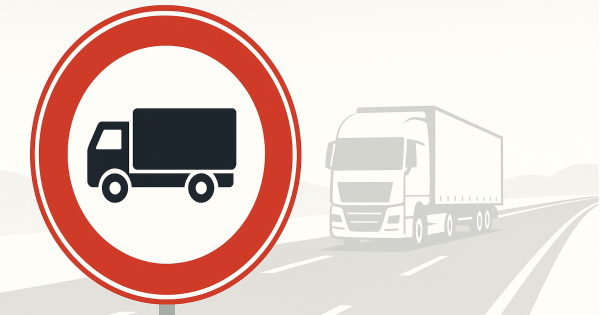
New Permit for Truck Traffic on October 31: Brandenburg Clarifies Transit Rules
The authorities of Brandenburg have issued a general exemption from the holiday truck traffic ban. The exception applies on October 31 (Reformation Day) in the years 2025 and 2026, from 00:00 to 22:00.
According to the regulation of the Ministry for Infrastructure and Regional Planning of the State of Brandenburg, trucks will be allowed to operate on this day along specified routes – primarily for traffic to and from Berlin.
The new Decree No. 7/2025, issued by the Ministry, reaffirms the existing permit for truck traffic on October 31 and provides more detailed rules for its application. The same motorway sections remain in force, but specific corridors have been added, connecting logistics centers and Berlin Brandenburg Airport (BER).
The permit covers:
➡️ Trucks with a gross vehicle weight exceeding 7.5 tons,
➡️ Trailers towed by trucks.
Exempted routes
The list of Brandenburg motorways remains unchanged and includes:
A2, A9, A10, A11, A12, A13, A14, A15, A19, A20, A24, A111, A113, A115, and A117.
A new element in the decree is the explicit designation of four logistics corridors:
➡️ From the GVZ Wustermark logistics center (B5 → Berlin),
➡️ From GVZ Freienbrink (L38 → A10 → B1/B5 → Berlin),
➡️ From GVZ Großbeeren (B101 → Berlin),
➡️ From Berlin Brandenburg Airport (BER) (A113/A117 → B96/B96a → Berlin).
The decree introduces more detailed rules regarding exceptions from the prohibition on leaving the designated routes.
The permit is of an exceptional nature and may be revoked at any time.
Leaving the approved routes is strictly prohibited, except in the following cases:
❌ Road closure due to an accident or construction work – designated detours must be used,
❌ No detour available – the shortest possible connection to the next approved route may be used,
❌ Vehicle towing required (§15a StVO) – the vehicle must be taken to the nearest appropriate location.
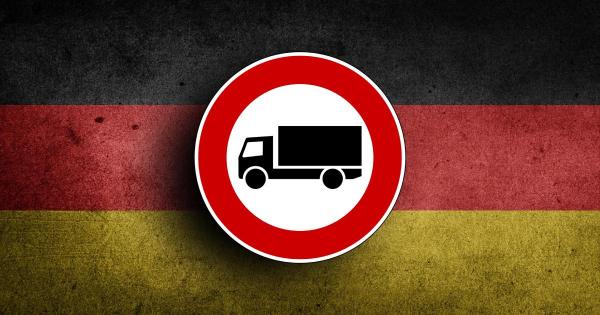
Germany: Complete closure of the A8 towards Munich. Detours for trucks
The A8 motorway will be completely closed in the direction of Munich between Mühlhausen and Merklingen. The closure will last from Friday, October 31 at 9:00 p.m. until Monday, November 3 at 5:00 a.m.
Traffic towards Stuttgart (Albabstieg) will not be restricted. On the nine-kilometre section known as Albaufstieg, maintenance and safety works will be carried out – including resurfacing, bridge repairs, and replacement of guardrails. According to Autobahn GmbH, this is the final stage of works aimed at preparing the A8 for winter conditions.
To avoid congestion and excessive pressure on local roads, the motorway authority urges drivers not to rely on GPS navigation and to follow the official diversion routes.
➡️ Transit traffic: from the Weinsberg interchange – via motorways A6 and A7 → then to A8 towards Munich or A7 towards Füssen.
➡️ Regional traffic: from the Wendlingen interchange via B313 and B10 to the Ulm-West interchange (access to A8 towards Munich).
➡️ Local traffic: from the Mühlhausen interchange via B466 and B10 (detour U29) to Ulm-West or L1230 towards Merklingen.
The A8 motorway is a key west-east connection in southern Germany. The route links Karlsruhe, Stuttgart, and Munich with Salzburg and is one of the country’s busiest roads – especially during public holidays and vacation periods.

Slovakia eases truck bans on November 1
Good news for carriers planning routes through Slovakia at the beginning of November. At the request of the ČESMAD Slovakia association, the Presidium of the Slovak Police Force has granted an exemption from the driving ban for heavy goods vehicles in effect on November 1, 2025.
The exemption applies to vehicles entering Slovak territory from neighboring countries, provided that their destination is located within Slovakia – for example, a delivery point or the carrier’s operating base. The decision aims to facilitate the return of vehicles to the country and reduce congestion at border crossings.
Truck movement will be permitted only during the following time windows:
– from 00:00 to 10:00
– and from 20:00 to 24:00
The ČESMAD Slovakia association expressed its gratitude to the Slovak Police Force for its flexible approach and support of the transport sector during the holiday traffic restrictions. It should be noted that November 1, All Saints’ Day, is a public holiday in Slovakia, during which truck driving bans normally apply on national roads.
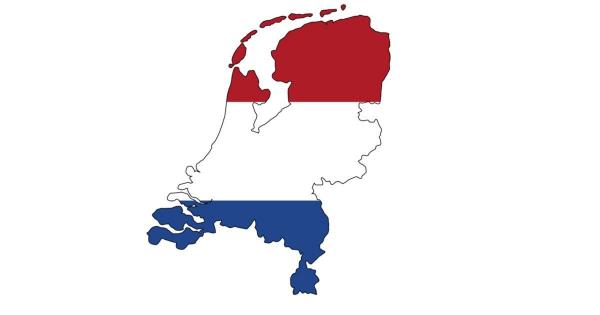
A13 and A16 Closed – Traffic Disruptions for Trucks in the Netherlands
During the weekend of 24 – 27 October 2025, extensive closures are planned on key sections of the road network in the Rotterdam region – specifically on motorways A13 (towards Delft) and A16 (towards Rotterdam), as well as on roads N209 and N3.
The reason for these closures is the connection of the new A16 Rotterdam motorway to the existing A13 and A16 routes at the Zestienhoven and Terbregseplein interchanges. In addition, maintenance work will be carried out on the N3 road. Traffic will be diverted via detours, and drivers should expect additional travel times of up to 60 minutes.
Scope of Closures:
◾ A16 – section between Ridderkerk and Terbregseplein interchanges in the direction of A20 (Hoek van Holland/Gouda).
– Exits and entrances No. 24 (Feijenoord), 25 (Rotterdam-Centrum/Capelle), 26 (Kralingen), and 27 (Prins Alexander) will be closed.
– Exception: the Feijenoord (24) entrance and Centrum/Capelle (25) exit will remain open.
◾ A13 – section from Kleinpolderplein interchange to Delft-Zuid exit in the direction of Delft.
– Entrances No. 12 (Berkel en Rodenrijs) and 11 (Overschie/Spaanse Polder) as well as exit No. 10 (Delft-Zuid) will be closed.
◾ N209 – section between the intersection with N472/Boterdorpseweg in Bergschenhoek and the connection with Vliegveldweg (towards A13).
– All intermediate entrances and exits will also be closed.
◾ N3 – southbound section between A15 in Papendrecht and A16 in Dordrecht.
Rijkswaterstaat notes that entrances, exits, and connecting ramps may be closed up to one hour earlier than the official start of works.
Detours:
➡️ Traffic from A16 will be diverted via A15, A4 (Benelux Tunnel), and A20.
➡️ Traffic from A13 – via A15 and A4 (Benelux Tunnel).
➡️ Traffic from N209 – via N472/Boterdorpseweg–Klapwijkseweg and N470.
➡️ Traffic from N3 – via A15 and A16.
Rijkswaterstaat advises drivers and transport operators to plan routes and travel times carefully, and to follow road signs and information on detours.
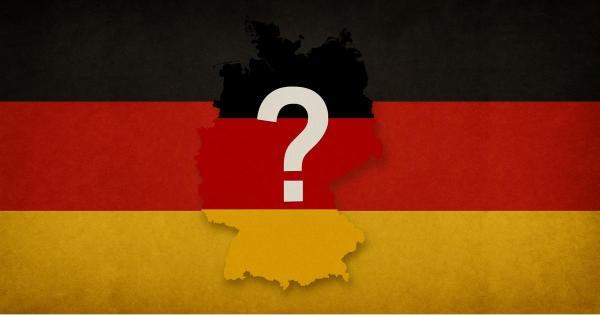
October 31 and November 1 – Only Some German States with Truck Driving Bans
October 31 (Reformation Day) and November 1 (All Saints’ Day) are public holidays in parts of Germany, during which truck driving bans apply only in certain federal states (Länder). In the remaining regions, traffic will proceed as usual.
October 31 – Reformation Day
A truck driving ban (vehicles over 7.5 tonnes GVW) will be in effect from 00:00 to 22:00 in the following federal states:
- Brandenburg
- Bremen
- Hamburg
- Mecklenburg-Western Pomerania
- Lower Saxony
- Saxony
- Saxony-Anhalt
- Schleswig-Holstein
- Thuringia
❗Note: In Lower Saxony, the ban starts later – from 06:00 to 22:00 (see “Exceptions” below).
November 1 – All Saints’ Day
On this day, the ban (over 7.5 tonnes GVW) will apply from 00:00 to 22:00 in other states:
- Baden-Württemberg
- Bavaria
- North Rhine-Westphalia
- Rhineland-Palatinate
- Saarland
❗Note: In North Rhine-Westphalia, the ban starts later – from 06:00 to 22:00 (see “Exceptions” below).
Not Everywhere! Exceptions for Trucks in Lower Saxony, North Rhine-Westphalia, and Berlin
Although most German states impose truck bans on holidays, not all regions apply them in full. Some have introduced special exemptions to facilitate international transport and reduce downtime for drivers and carriers. As a result, in several federal states, trucks are allowed to operate during certain hours or on designated motorway sections, despite the official bans.
⚠️ Special Rules in Lower Saxony and North Rhine-Westphalia
These states have applied relaxed regulations for several years. To avoid situations where drivers would have to stop for two consecutive days – October 31 (Reformation Day) and November 1 (All Saints’ Day) – both Lower Saxony and North Rhine-Westphalia enforce a shortened ban from 06:00 to 22:00.
Moreover, transit traffic is permitted on key routes that can be safely used without the risk of fines. These include motorway sections:
➡️ A1: Lotte/Osnabrück – Osnabrück-Nord
➡️ A2: Bad Oeynhausen – Lower Saxony/Saxony-Anhalt border
➡️ A30: Bad Bentheim – Bad Oeynhausen
➡️ A31: Schüttorf – Lower Saxony/NRW border
➡️ A33: Osnabrück-Süd – Dissen-Süd
⚠️ Hesse and Transit through North Rhine-Westphalia
In Hesse, the All Saints’ Day truck ban (November 1) does not apply, as this is not a public holiday in that state.
However, drivers traveling from or through Hesse into North Rhine-Westphalia (NRW) must remember that a truck ban is in effect there on that date.
To facilitate safe transit, NRW has designated a special transit corridor, allowing trucks to pass through the state via the shortest possible route without violating the ban.
➡️ Transit section: Motorway A44, junction 65, from km 43.2 to 28.4 (state border).
This ensures that drivers can cross NRW legally, avoiding fines or legal issues.
⚠️ Permitted routes on October 31 in Berlin and neighbouring federal states
On Reformation Day (October 31), the federal state of Berlin, in coordination with neighboring states – Brandenburg, Mecklenburg-Western Pomerania, Saxony, Saxony-Anhalt, and Thuringia – allows truck movements to and from Berlin on selected motorways.
Permitted routes:A2, A4, A9, A10, A11, A12, A13, A14, A15, A17, A19, A20, A24, A38, A71, A72, A73, A111, A113, A114, A115, A117, A143.
❗However, leaving the motorway is prohibited in states where a holiday driving ban applies.
Exceptions are made only for emergency situations – such as road closures, detours, or vehicle towing.
A new element of the decree is the precise designation of four logistics corridors:
➡️ from the GVZ Wustermark logistics centre (B5 → Berlin),
➡️ from GVZ Freienbrink (L38 → A10 → B1/B5 → Berlin),
➡️ from GVZ Großbeeren (B101 → Berlin),
➡️ from Berlin Brandenburg Airport (BER) (A113/A117 → B96/B96a → Berlin).
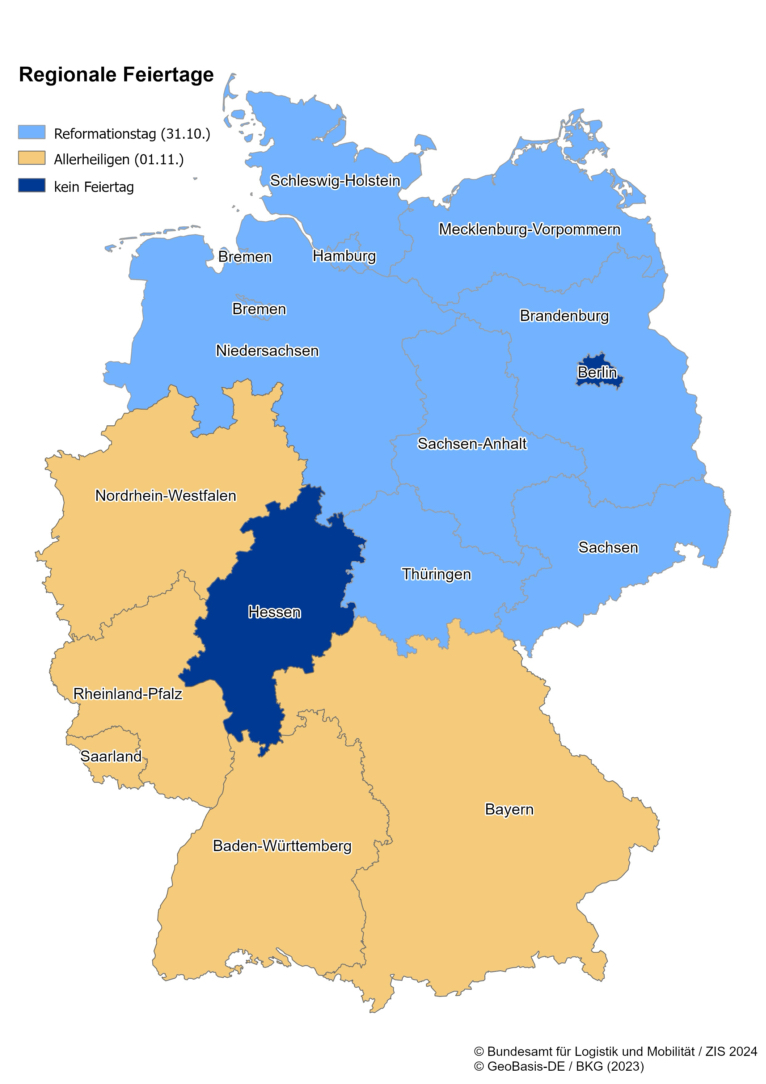

Antwerp: Major Traffic Disruptions for Trucks in November
Drivers planning routes through northern Belgium should expect significant disruptions in the Antwerp area. Construction work on new traffic interchanges will begin on the R1 motorway, resulting in traffic restrictions.
Due to the construction of these new interchanges, temporary traffic disruptions will be introduced on the R1 motorway in both directions on the following dates:
➡ 27–31 October
➡ 7–12 November
Recommended detours and alternative routes
Drivers travelling between Hasselt and Ghent are advised to take a detour via Brussels on the specified dates. Vehicles coming from the A12 (north) and E19 (north) towards Ghent should use the R2 motorway and the Liefkenshoek Tunnel.
Good news for drivers: during the period of major disruptions, the Liefkenshoek Tunnel will be toll-free in both directions on the following days and times:
➡ 8 and 9 November (Saturday and Sunday) from 8:00 to 20:00,
➡ 10 November (Monday) from 6:00 to 22:00,
➡ 11 November (Tuesday) from 8:00 to 20:00.
Antwerp R1: Major disruptions from 7 to 12 November
From Friday, 7 November, 22:00, until Wednesday, 12 November, 05:00, drivers should expect heavy congestion and reduced capacity on the Antwerp Ring Road (R1) between Merksem and Deurne. On the Deurne–Borgerhout section towards Ghent and Brussels, only two lanes will remain open.
The following closures will be in effect:
◾ On-ramp from Deurne to the Ring Road towards Ghent and Brussels,
◾ E313–R1 junction towards Ghent and Brussels,
◾ R1 connection from the Netherlands to the E313,
◾ On- and off-ramps in Berchem and Merksem,
◾ Groenendaallaan towards Merksem,
◾ Mechelsebrug towards the city centre.
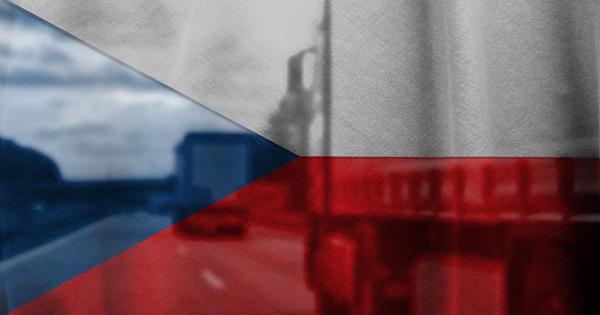
Czech Republic: Truck driving ban on October 28
On Tuesday, October 28, the Czech Republic celebrates Independence Day (Den vzniku samostatného československého státu). On this day, a general ban on the movement of trucks and combinations with a maximum permissible weight over 7.5 tonnes applies.
According to Czech regulations, truck traffic restrictions apply year-round on Sundays and public holidays between 13:00 and 22:00. In practice, this means that for the upcoming weekend and the beginning of the week, drivers need to consider the following restrictions:
October 26 (Sunday) – ban in effect from 13:00 to 22:00
October 27 (Monday) – no ban
October 28 (Tuesday, Independence Day) – ban in effect again from 13:00 to 22:00
Vehicles exempt from the restrictions include, among others:
▫️ vehicles used for combined transport (from the sender to the nearest terminal or from the terminal to the recipient)
▫️ vehicles transporting seasonal crops
▫️ vehicles used for construction, maintenance, or repair of roads
▫️ vehicles transporting perishable goods (according to the ATP agreement, if they constitute more than half of the load)
▫️ vehicles transporting animals or fuel necessary for the operation of filling stations
▫️ vehicles performing loading or unloading of airplanes, ships, or trains within a 100 km radius
▫️ vehicles transporting postal consignments
▫️ vehicles traveling empty in connection with the above transports
▫️ vehicles used in natural disaster situations
▫️ vehicles belonging to the military, police, or fire services
▫️ vehicles transporting temperature-sensitive chemical substances
▫️ vehicles used for driver training
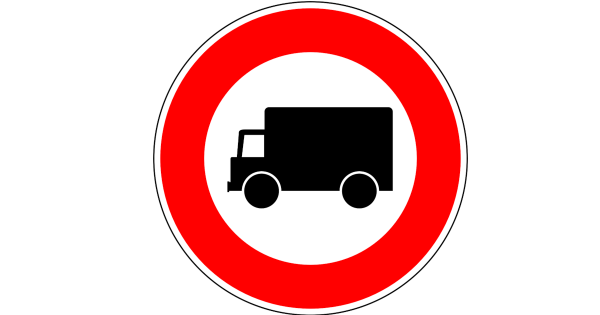
German Unity Day: 22-Hour Truck Ban + Additional Restrictions in Neighboring Countries
On October 3, Germany celebrates one of its most important national holidays – German Unity Day. In 2025, the holiday falls on a Friday, which has implications for international transport.
According to German regulations, on public holidays a driving ban applies to trucks with a gross vehicle weight exceeding 7.5 tons. The restriction will be in force from 00:00 to 22:00 across the entire road network in all federal states.
List of exemptions from the bans:
Restrictions in neighboring countries
To avoid traffic congestion at the borders, Austria and Luxembourg have also introduced restrictions for trucks heading to Germany on this day:
❌ Austria – the ban applies from 00:00 to 22:00 on the A12 and A13 motorways for vehicles traveling towards Germany.
❌ Luxembourg – the ban applies from 00:00 to 21:45 for trucks heading towards Germany.
In both countries, exemptions from the bans are provided for, similar to those in Germany.
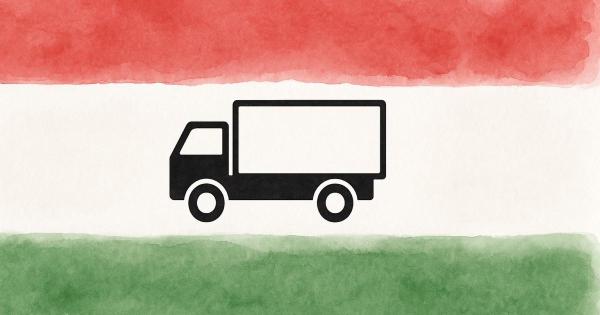
Hungary: Truck traffic ban on October 23 [UPDATE]
October 23 is one of the most important dates in Hungary’s history – the National Day of Hungary (Nemzeti ünnep). The holiday commemorates the 1956 revolution against the communist regime and the proclamation of the Third Republic of Hungary in 1989.
Update – October 21
At the request of the Hungarian Chamber of Transport Industry (MKFE), the Hungarian Ministry of Transport has decided to shorten the duration of the truck driving ban in connection with the national holiday on October 23, 2025. Thanks to the introduced changes, trucks with a gross vehicle weight (GVW) over 7.5 tonnes will be allowed to operate during the night, and the ban will only take effect at 6:00 a.m. on the holiday.
Information as of October 20
On this occasion, a traffic ban for trucks over 7.5 tonnes GVW applies throughout the country. According to the regulations, between September 1 and June 30, the ban is in force:
⭕ from 22:00 to 24:00 on Saturdays and on the day before a public holiday,
⭕ from 00:00 to 22:00 on Sundays and on public holidays.
In practice, this means that this year drivers will have to start their rest period on Wednesday, October 22 at 22:00, and may resume driving on Thursday, October 23 at 22:00. It is important to note that during the ban, drivers are not allowed to return to the company’s base or the first unloading point from the national border, as this exemption applies only in July and August.
List of possible exemptions from the restrictions
❗ Additional exception for the winter season:
From November 4 to March 1, the restrictions do not apply to vehicles meeting the EURO 3 emission standard or higher, provided they are engaged in international transport.
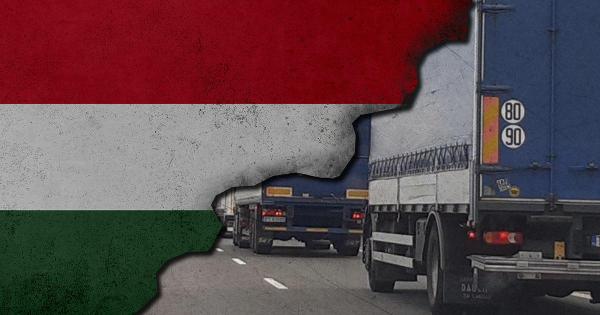
❗ Hungary Shortens Truck Driving Ban on October 23
At the request of the Hungarian Chamber of Transport Industry (MKFE), the Hungarian Ministry of Transport has decided to shorten the duration of the truck driving ban in connection with the national holiday on October 23, 2025.
Thanks to the introduced changes, trucks with a gross vehicle weight (GVW) over 7.5 tonnes will be allowed to operate during the night, and the ban will only take effect at 6:00 a.m. on the holiday. Previously, the restriction was planned to be in effect from Wednesday, October 22 at 10:00 p.m. until Thursday, October 23 at 10:00 p.m. The decision was made at the request of industry organizations, which called for greater flexibility in carrier operations and for ensuring the smooth functioning of supply chains.
Vehicles exempted from the restrictions include those transporting live animals, fresh milk and dairy products, fresh and frozen meat and meat products, fresh bread, perishable foodstuffs, eggs, fresh, raw, non-frozen, non-dried and unprocessed vegetables and fruits, cereals, as well as vehicles traveling empty between loading, unloading points, and their base.
❗ Trucks returning from abroad are not allowed to travel from the border to their base or first unloading point during the ban. This exemption only applies in July and August each year.